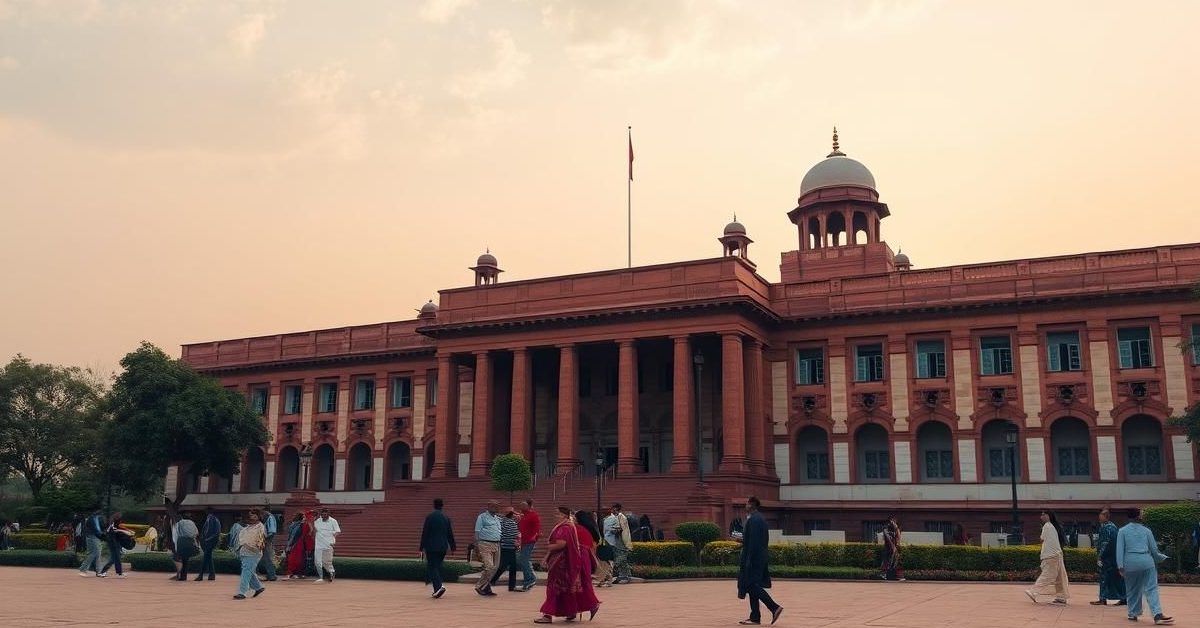Explore essential aspects of Indian polity, from the dynamics of parliamentary sessions and the election of the Vice-President to landmark rulings on ancestral property rights and the process of judicial removal.
India’s Parliamentary Practices: Sessions and Summoning
India’s Parliament does not operate on a fixed calendar but typically convenes for three sessions annually. The longest among these is the Budget Session, running from late January to early May, followed by the Monsoon Session (July-August) and the Winter Session (November-December).
The summoning of Parliament is outlined in Article 85 of the Constitution of India. This provision, inspired by the Government of India Act, 1935, mandates that the central legislature must meet at least once a year, ensuring no more than 12 months pass between two sessions.
Expanding Property Rights: A Win for Tribal Women
In a significant judgment, the Supreme Court has affirmed that tribal women are entitled to an equal share in ancestral property. This ruling addresses a long-standing gender disparity.
The Court invoked the principle of “justice, equity and good conscience” to ensure this right, especially in cases where specific laws governing intestate succession among Scheduled Tribes were absent.
Boosting Women’s Representation in State Legislatures
Article 332-A of the Indian Constitution is dedicated to the reservation of seats for women in the Legislative Assemblies of the States. It mandates that seats be reserved for women in every State Legislative Assembly.
Furthermore, it specifies that approximately one-third of seats reserved for Scheduled Castes or Scheduled Tribes must also be reserved for women from these communities. Overall, roughly one-third of all directly elected seats in State Legislative Assemblies are to be reserved for women.
The Intricate Process of Judicial Removal
The process for removing a judge from office is detailed and requires substantial support. A notice for removal must be signed by at least 100 members in the Lok Sabha or 50 members in the Rajya Sabha, as per the Judges Inquiry Act, 1968.
Once submitted, the presiding officer of the respective House holds the discretion to either accept or reject the motion. Should it be accepted, a three-member committee, comprising two judges and a jurist, is constituted to investigate the complaint and determine if impeachment proceedings are warranted.
Decoding the Vice-President’s Office: Role, Vacancies, and Election
The Vice-President’s office is the second-highest constitutional post in India. Historically, two Vice-Presidents—V.V. Giri and R. Venkataraman—resigned mid-term to successfully contest presidential elections, demonstrating a unique path in Indian politics.
Unlike the President’s vacancy, which must be filled within six months, there is no fixed deadline for a Vice-Presidential vacancy; the election must be held “as soon as possible.” A newly elected Vice-President serves a full five-year term, not just the remainder of their predecessor’s tenure. Importantly, the Constitution does not provide for an acting Vice-President; in their absence, the Deputy Chairman presides over the Rajya Sabha.
The Vice-President is elected by an electoral college comprising members from both the Lok Sabha and Rajya Sabha, crucially including nominated members. The election employs a system of proportional representation with a single transferable vote, where each Member of Parliament ranks candidates by preference. To win, a candidate must secure a minimum quota of votes, calculated by dividing the total valid votes by two and adding one.
- India does not have a fixed parliamentary calendar; it typically holds three sessions annually.
- The Supreme Court has granted tribal women equal rights in ancestral property, invoking principles of justice and equity.
- Article 332-A of the Constitution provides for the reservation of seats for women in State Legislative Assemblies.
- The removal of a judge requires a specific number of MP signatures, and the presiding officer has the discretion to accept or reject the motion.
- There is no fixed deadline to fill a Vice-Presidential vacancy, and a newly elected Vice-President serves a full five-year term.
These insights highlight key aspects of India’s governance and constitutional framework, emphasizing both its established norms and evolving interpretations.















